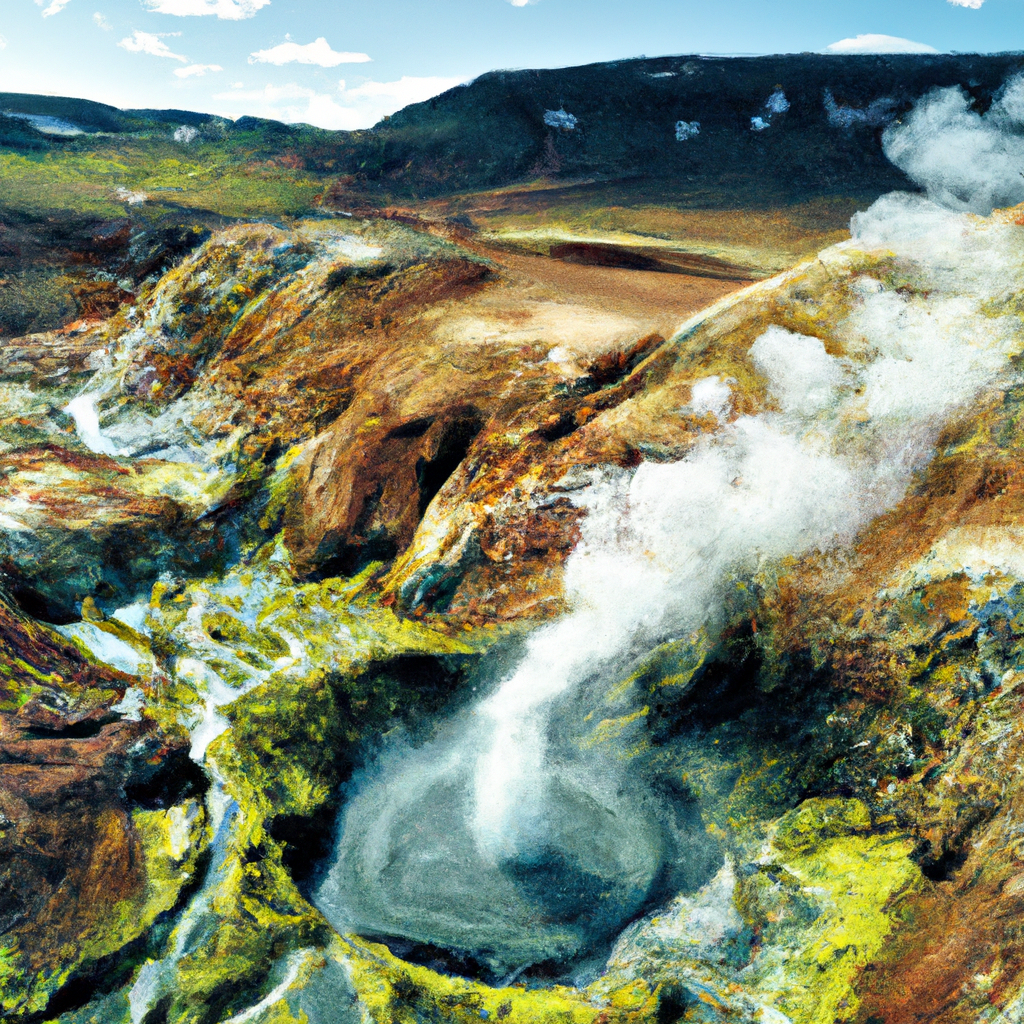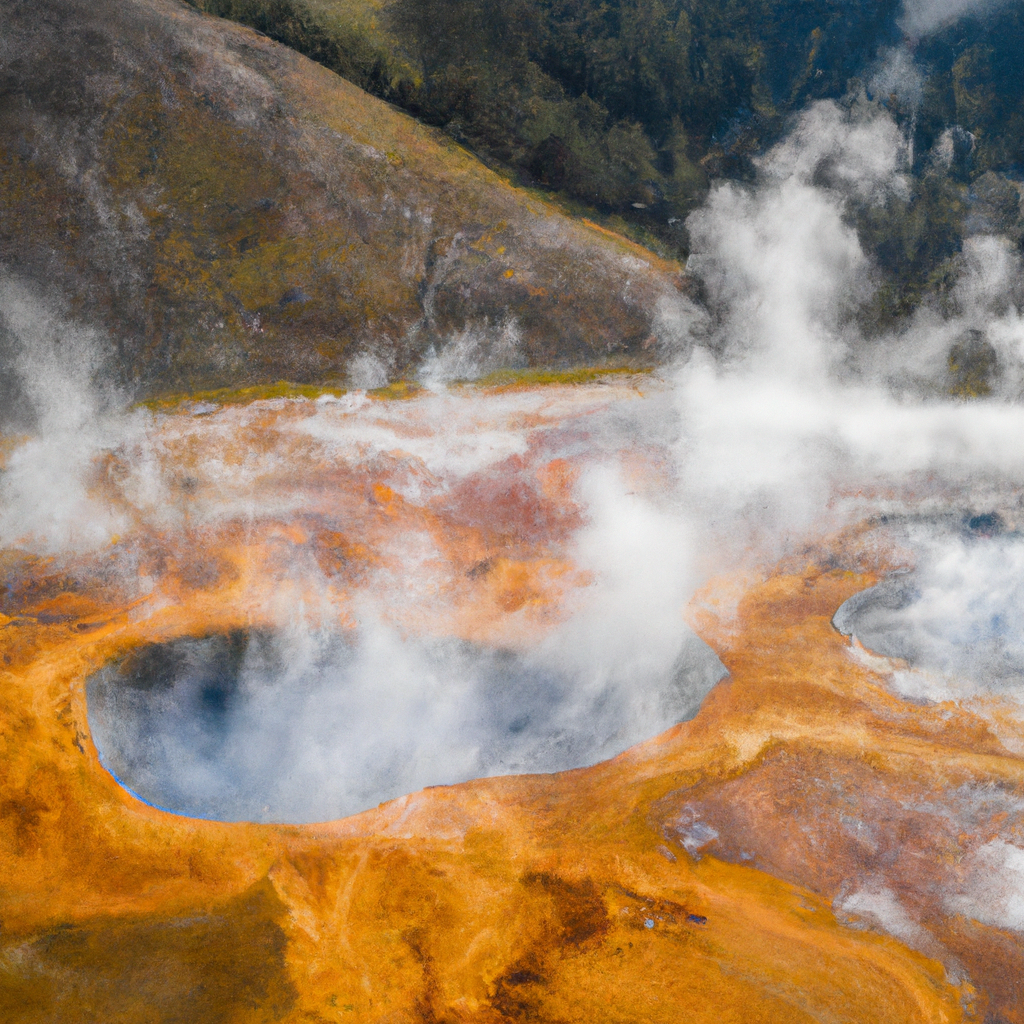Have you ever wondered why hot springs are often found in volcanic regions? The answer lies in the powerful forces that shape the Earth̵7;s surface. When volcanoes erupt, they release molten rock, or magma, which heats up the surrounding groundwater. This heated water then rises to the surface, creating the soothing and rejuvenating hot springs that have attracted visitors for centuries. So, next time you find yourself soaking in the warmth of a hot spring, remember that its origin can be traced back to the fiery depths of a volcanic region.
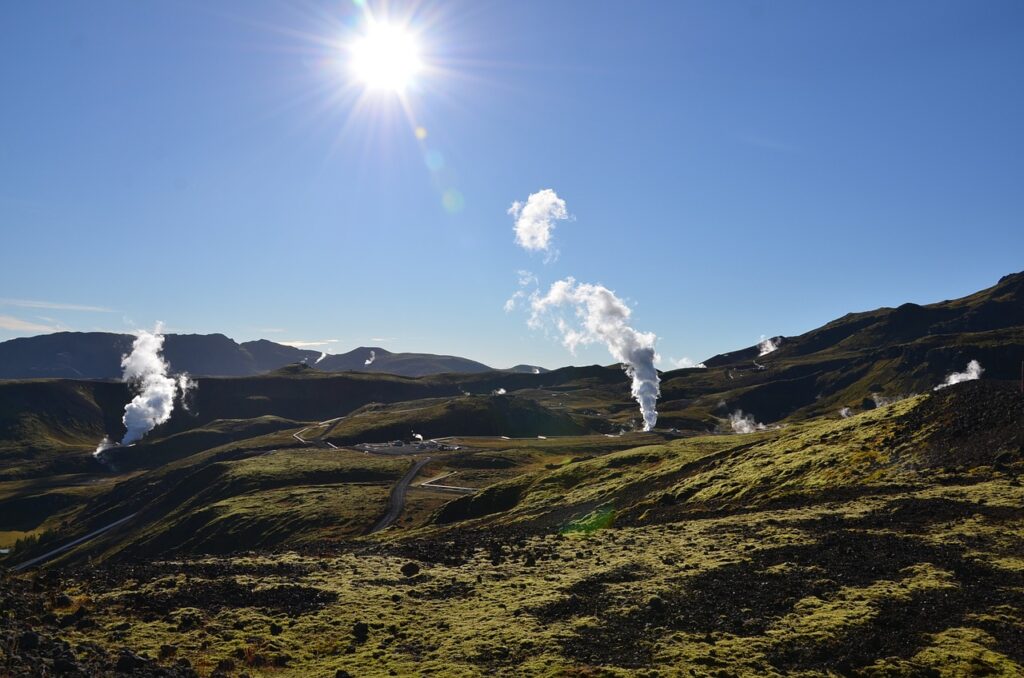
Formation of Hot Springs
Hot springs are a natural wonder that can be found in various parts of the world. However, they are often commonly found in volcanic regions. This is because the formation of hot springs is closely related to the geological processes and activities that occur in these volcanic areas.
Geothermal Heat
One of the key factors in the formation of hot springs is geothermal heat. Geothermal heat is generated by the Earth’s internal heat, which is trapped beneath the Earth’s crust. In volcanic regions, this heat is particularly intense due to the presence of magma and volcanic activity. The geothermal heat warms up underground water and creates hot springs.
Cracks and Fractures
Another important factor in the formation of hot springs is the presence of cracks and fractures in the Earth’s crust. These cracks and fractures provide a pathway for underground water to rise to the surface, forming hot springs. In volcanic regions, the intense geological activity often leads to the creation of numerous cracks and fractures, increasing the likelihood of hot spring formation.
Aquifers
Aquifers are underground layers of permeable rock or sediment that can store and transmit water. In volcanic regions, aquifers play a crucial role in the formation of hot springs. The permeable nature of volcanic rocks allows water to flow through them, collecting heat from the geothermal sources along the way. Once the heated water reaches a confined aquifer, it can discharge to the surface as a hot spring.
Volcanic Activity
Volcanic activity is a key driver in the formation of hot springs. The intense geological processes that occur in volcanic regions create the ideal conditions for hot springs to emerge.
Geological Processes
Volcanic regions are characterized by intense geological processes, such as volcanic eruptions, lava flows, and tectonic movements. These processes create a dynamic environment that influences the formation and behavior of hot springs. The geological forces at play can create new fractures and pathways for underground water, leading to the formation of hot springs.
Magma Chambers
Magma chambers are underground reservoirs of molten rock located beneath volcanoes. The presence of magma chambers in volcanic regions contributes to the formation of hot springs. As magma rises through the Earth’s crust, it heats up surrounding rocks and the groundwater, eventually leading to the emergence of hot springs.
Volcanic Gases
Volcanic gases, such as carbon dioxide and sulfur dioxide, are released during volcanic activity. These gases can dissolve in underground water, altering its chemical composition. The presence of volcanic gases in the water can contribute to the unique characteristics of hot springs found in volcanic regions.
Types of Hot Springs
Hot springs can manifest in various forms, each with its own distinct characteristics and geological origins.
Fumaroles
Fumaroles are hot springs characterized by the emission of steam and gases directly into the atmosphere. These openings in the Earth’s crust allow hot water and gases to escape, creating unique geological features. Fumaroles are often associated with volcanic activity and can be found in volcanic regions worldwide.
Mud Baths
Mud baths are a type of hot spring that contains a high concentration of clay and minerals. As the heated water rises to the surface, it brings along sediment and minerals, creating a mixture of mud and water. Mud baths are sought after for their therapeutic properties and are popular in many volcanic regions.
Boiling Springs
Boiling springs, as the name suggests, are hot springs where the water reaches its boiling point. These springs are characterized by the vigorous boiling and bubbling of the water, creating a dramatic display of nature’s power. Boiling springs are often found in areas with high geothermal activity and are a testament to the intense heat beneath the Earth’s surface.
Heat Transfer in Volcanic Regions
Heat transfer plays a crucial role in the functioning of hot springs in volcanic regions. There are three main mechanisms of heat transfer: conduction, convection, and radiation.
Conduction
Conduction refers to the transfer of heat through direct contact between objects or materials. In volcanic regions, heat is transferred from the geothermal sources, such as magma chambers or underground rocks, to the surrounding water through conduction. The heated water then rises to the surface, forming hot springs.
Convection
Convection involves the transfer of heat through the movement of fluids, such as water or air. In volcanic regions, convection plays a significant role in the formation and circulation of hot springs. As heated water near the geothermal sources becomes less dense, it rises to the surface, while cooler water descends to replace it. This convection process drives the circulation of water in the underground aquifers, ultimately leading to the emergence of hot springs.
Radiation
Radiation refers to the transfer of heat through electromagnetic waves. In volcanic regions, radiation occurs when the heat from the geothermal sources is emitted as infrared radiation. This radiation can warm up the surrounding rocks and water, contributing to the formation of hot springs.
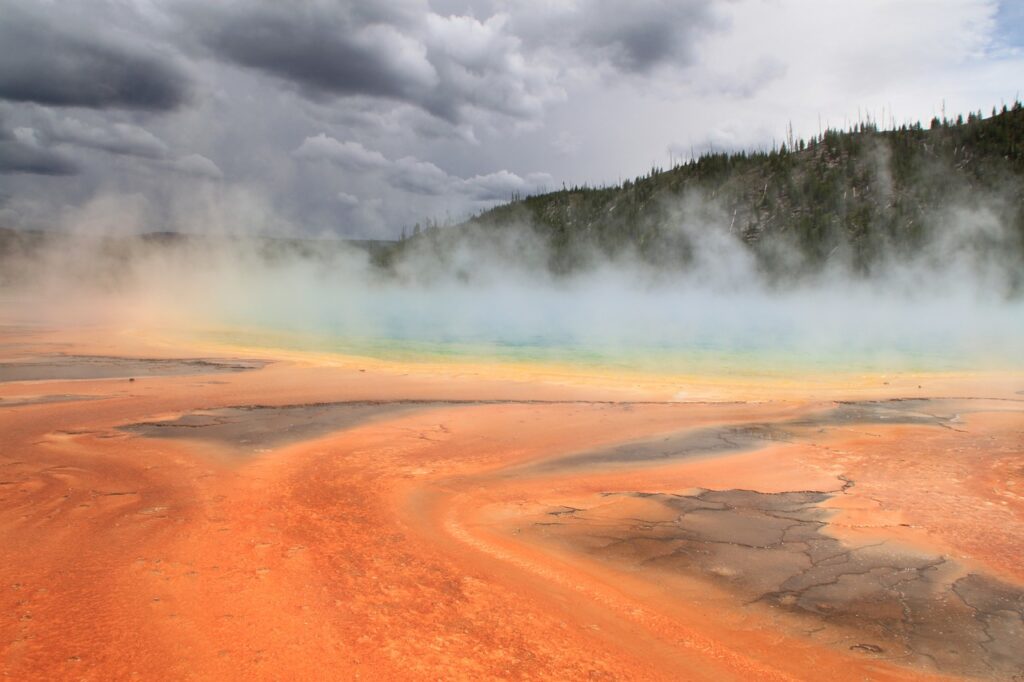
Role of Water
Water is a vital component in the formation and functioning of hot springs in volcanic regions. It acts as a heat carrier and plays a crucial role in the circulation of water within the volcanic system.
Water as a Heat Carrier
Water has a high heat capacity, which means it can absorb and retain large amounts of thermal energy. In volcanic regions, water acts as a heat carrier, absorbing heat from the geothermal sources and transferring it to the surface as hot springs. The ability of water to store and transport heat is essential for the formation of hot springs.
Water Circulation in Volcanic Systems
Water circulation is a fundamental process in volcanic regions that contributes to the formation and maintenance of hot springs. As heated water rises from the geothermal sources, it creates a flow within the aquifers and fractures. This circulation of water allows the heat to be distributed, ensuring a continuous supply of hot water to the surface.
Geological Structures
The geological structures present in volcanic regions play a significant role in the formation and behavior of hot springs.
Faults and Fissures
Faults and fissures are cracks or fractures in the Earth’s crust that result from tectonic forces. These geological structures are prevalent in volcanic regions due to the intense tectonic activity. Faults and fissures provide pathways for underground water to reach the surface, forming hot springs. The alignment and characteristics of these structures can influence the size, shape, and temperature of the hot springs.
Crustal Movements
Crustal movements, including uplift and subsidence, are common in volcanic regions. These movements can cause changes in the elevation and position of rocks and aquifers, affecting the formation and behavior of hot springs. Crustal movements can create new pathways for water flow or disrupt existing ones, altering the characteristics of hot springs over time.
Hydrothermal Circulation
Hydrothermal circulation refers to the circulation of water within the Earth’s crust, driven by heat from geothermal sources. This circulation occurs in volcanic regions and is essential for the formation and maintenance of hot springs. The underground circulation of water allows the heat to be transported and distributed, ensuring a continuous supply of hot water to the surface.
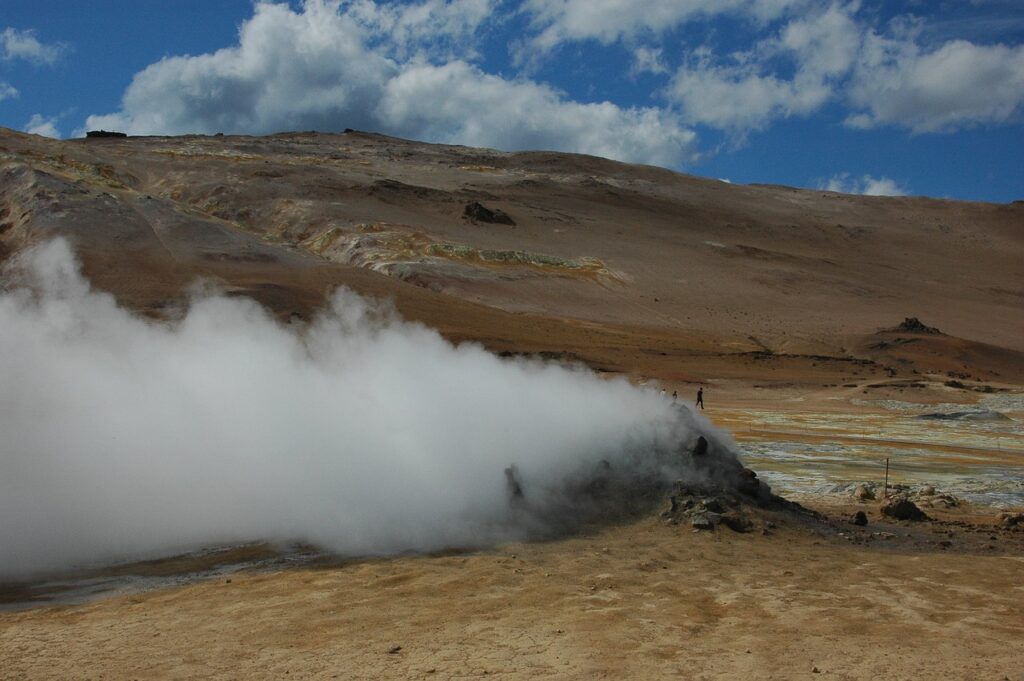
Chemical Composition of Hot Springs
The chemical composition of hot springs in volcanic regions is influenced by various factors, including the dissolved minerals, acidity and pH levels, and the presence of volatile compounds.
Dissolved Minerals
Hot springs in volcanic regions often contain a high concentration of dissolved minerals. As water percolates through the underground rocks, it interacts with the minerals present, leading to their dissolution. The dissolved minerals are then carried to the surface, where they can precipitate and form mineral deposits. The unique chemical composition of hot springs contributes to their healing properties and creates visually stunning formations.
Acidity and pH Levels
The acidity and pH levels of hot springs can vary depending on the geological environment. In volcanic regions, the presence of volcanic gases can dissolve in the water, increasing its acidity. The pH levels of hot springs can range from acidic to alkaline, creating diverse habitats for different types of organisms.
Presence of Volatile Compounds
Volatile compounds, such as sulfur, carbon dioxide, and hydrogen sulfide, are often found in hot springs in volcanic regions. These compounds are released during volcanic activity and can dissolve in the underground water. The presence of volatile compounds gives hot springs their characteristic smell and contributes to their unique chemical composition.
Geographical Distribution and Tectonic Plates
The distribution of hot springs is closely linked to the movement of tectonic plates and the geological phenomena associated with them.
Ring of Fire
The Ring of Fire is a major area in the basin of the Pacific Ocean where a large number of earthquakes and volcanic eruptions occur. This region is known for its intense tectonic activity, which creates the perfect conditions for hot spring formation. Countries located within the Ring of Fire, such as Japan, Indonesia, and the United States, are renowned for their hot springs.
Mid-Ocean Ridges
Mid-ocean ridges are underwater mountain ranges where tectonic plates move apart. These ridges are characterized by volcanic activity and hydrothermal vents, which release hot water and gases into the ocean. The hot water discharging from these hydrothermal vents can create hot springs along the ocean floor, forming unique ecosystems that thrive in extreme conditions.
Subduction Zones
Subduction zones occur when one tectonic plate sinks beneath another. These zones are associated with intense geological activity, including volcanic eruptions and earthquakes. Hot springs can form in subduction zones as a result of the interaction between the subducting plate and the overlying plate. The subducting plate can release fluids and heat, leading to the formation of hot springs in these regions.
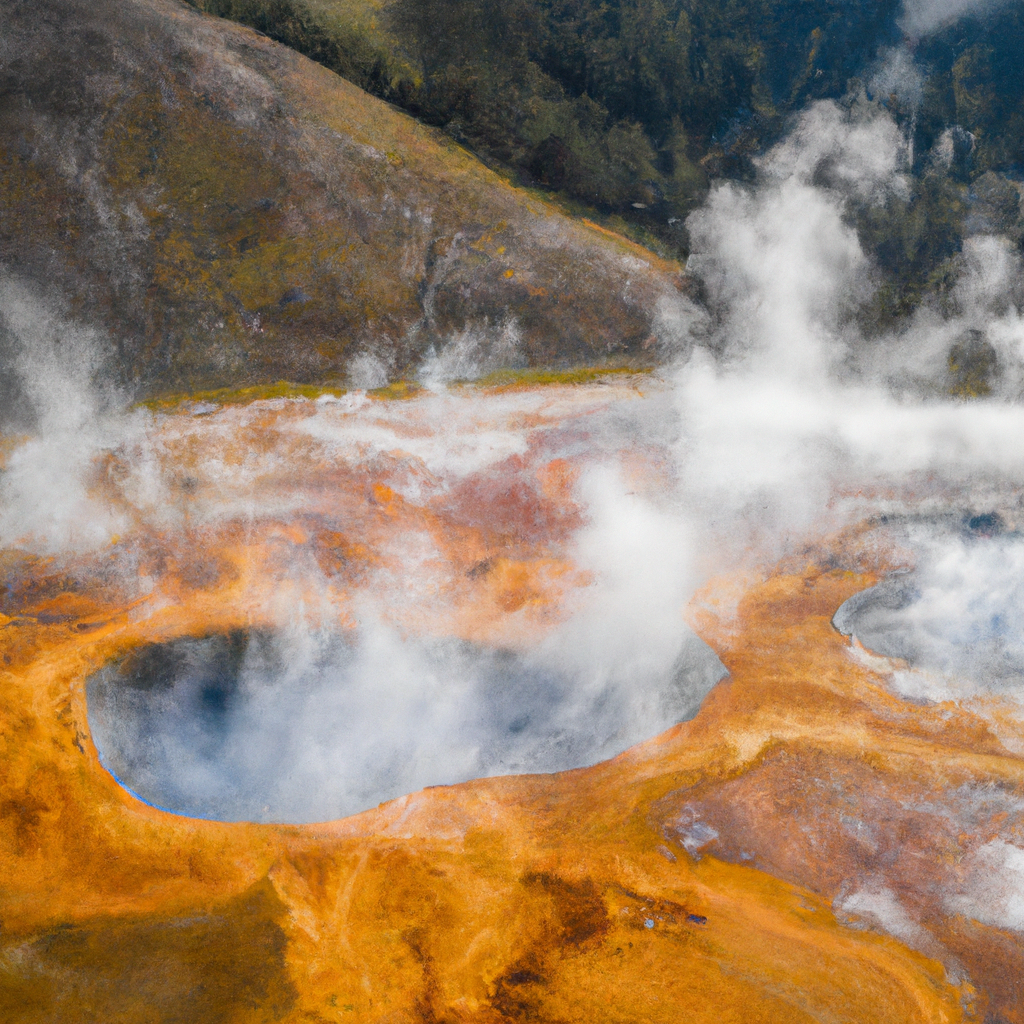
Effects of Hot Springs on Ecosystems
Hot springs have a significant impact on the ecosystems found in volcanic regions, especially in terms of microbial life and the adaptation of unique species.
Microbial Life
Hot springs are home to a diverse range of microbial life forms that have adapted to extreme conditions. The high temperatures, acidity, and the presence of dissolved minerals create a challenging environment for life. However, certain microorganisms, called thermophiles, thrive in these conditions and play a crucial role in the ecosystem. Some thermophiles can convert sulfur compounds into energy, contributing to the sulfur cycle and shaping the microbial communities found in hot springs.
Unique Species Adaptation
Hot springs provide a habitat for unique species that have adapted to survive in the extreme conditions present. These species have evolved specialized characteristics that allow them to tolerate high temperatures, acidic conditions, and the presence of dissolved minerals. The adaptation of these species to hot springs showcases the remarkable resilience and diversity of life on Earth.
Hot Springs as Tourist Destinations
Hot springs have long been cherished as popular tourist destinations due to their thermal spas, health benefits, and cultural significance.
Thermal Spas
Hot springs are renowned for their thermal spas, which offer relaxation and rejuvenation for visitors. The warm, mineral-rich water is believed to have therapeutic properties that can help relieve stress, muscle tension, and various ailments. Thermal spa resorts offer a range of amenities, including hot pools, saunas, and spa treatments, creating an oasis of well-being amidst the volcanic landscapes.
Health Benefits
The health benefits of hot springs have been recognized for centuries. The warm water and dissolved minerals can help soothe aching muscles, improve blood circulation, and promote overall well-being. Many hot springs are believed to have healing properties, and people from all over the world travel to volcanic regions to experience these natural remedies.
Cultural Significance
Hot springs hold cultural significance in many societies. They have been revered for their healing properties and spiritual associations. In some cultures, hot springs are considered sacred and are used for purification rituals or ceremonies. Hot springs also serve as gathering places for communities, where people come together to enjoy the therapeutic waters and socialize.
In conclusion, hot springs are often found in volcanic regions due to the interplay of various geological processes, heat transfer mechanisms, and the presence of underground water sources. The unique formation and chemical composition of hot springs create diverse ecosystems and offer a range of benefits to both nature and humans. Whether as geological wonders, healing retreats, or cultural landmarks, hot springs continue to captivate and enchant visitors worldwide. So, dive into the warm embrace of a hot spring and experience the magic and beauty of our volcanic world.
